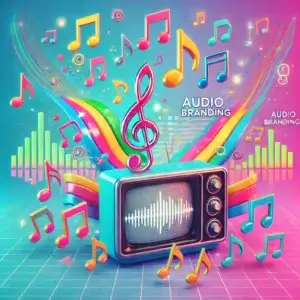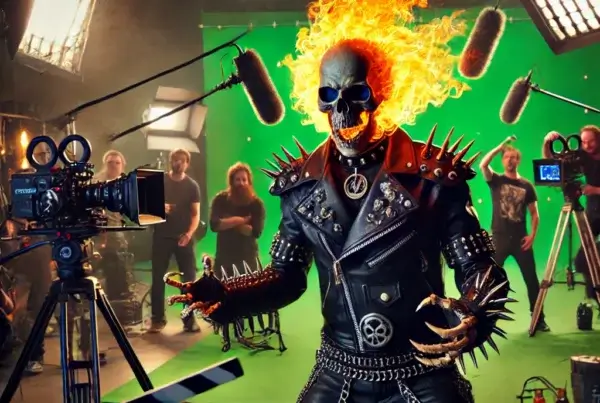Where Have All the Good Jingles Gone?
The Power of Music in Marketing
Music has always been a crucial element in the world of advertising. Whether it’s a catchy melody or lyrics that stay with you long after the ad has ended, music can create an emotional connection with consumers and ensure that brands are remembered. One such example is the Nestlé Alpine White “Sweet Dreams” commercial from 1986. The dreamy visuals, paired with the soothing jingle “Sweet Dreams You Can’t Resist,” composed by Lloyd Landesman, made this ad unforgettable. The gentle, luxurious tune perfectly captured the indulgent nature of Nestlé’s white chocolate bar. More than just an ad, it was an experience, helping Nestlé create a sense of nostalgia for a product that otherwise might have been forgotten.
Music in advertising is more than a backdrop; it’s a powerful psychological tool. Neuroscience research shows that music activates emotional centers in the brain, helping to solidify memories. When brands tie their identity to a memorable jingle, they’re making a long-lasting impression that resonates on both a conscious and subconscious level. This was especially prevalent in the 80s and 90s when jingles dominated the airwaves and became an essential part of advertising campaigns.
Jingles as a Marketing Superpower
In the 80s and 90s, jingles were essential to establishing a brand’s identity. The repetition and memorability of jingles made them marketing superpowers. One prime example is the famous State Farm jingle, “Like a Good Neighbor, State Farm is There,” written by Barry Manilow in 1971. This simple, yet effective jingle conveyed a message of trust, reliability, and comfort. It stuck with consumers so well that it became synonymous with State Farm itself, helping the insurance company establish itself as a leading provider of security and peace of mind.
Similarly, car dealer Cal Worthington revolutionized local car sales advertising with his “Go See Cal” jingle. What made his commercials stand out wasn’t just the music, but also the quirky humor—Cal never actually had a dog named Spot. Instead, he featured exotic animals like tigers, elephants, and even a killer whale, claiming they were his “dog Spot.” The jingle itself, set to the tune of “If You’re Happy and You Know It,” became an iconic part of the brand, and viewers couldn’t help but hum along. This humorous and catchy ad strategy allowed Worthington to build a car dealership empire that expanded across the West Coast.
Jingles like these worked because they connected with consumers on multiple levels. They were catchy, easy to remember, and were often heard repeatedly, making them impossible to forget. Most importantly, they helped brands differentiate themselves in a crowded marketplace. A simple jingle could become the anthem for a brand, much like a logo or tagline, cementing its place in popular culture.
Why Are Jingles Disappearing?
Despite their powerful impact, jingles have slowly disappeared from the marketing landscape. The shift to digital platforms, where visual content reigns supreme, is partly to blame. Today, brands are focused on creating quick, attention-grabbing visuals that can be shared easily on social media or consumed in bite-sized formats on platforms like YouTube and TikTok. With the rise of algorithm-driven advertising, where every second counts, many brands have steered away from investing in long-form, repetitive jingles.
However, this shift has led to the loss of a powerful branding tool. Jingles created an emotional resonance that is difficult to replicate with purely visual ads. Think about the theme song from The Golden Girls, “Thank You for Being a Friend.” Even decades after the show aired, hearing the song can instantly evoke feelings of warmth, nostalgia, and comfort. Similarly, Friends’ “I’ll Be There for You” by The Rembrandts became a cultural anthem, making its way into the hearts of millions. These songs aren’t just background music; they represent the emotional core of the shows, connecting audiences on a deep level.
In the advertising world, jingles worked the same way. They helped brands build emotional connections with consumers. But today’s emphasis on quick, visual marketing has left little room for this kind of auditory branding. As a result, we’re seeing fewer jingles and more short, punchy ads designed to capture attention for a fleeting moment, rather than create a lasting impact.
The Modern Jingle: Is There Hope?
While traditional jingles may no longer dominate the advertising space, there’s still hope for their resurgence. Some brands are rediscovering the power of audio branding. **McDonald’s**, for example, has kept its famous “I’m Lovin’ It” jingle alive for over a decade. This simple, catchy tune has become a global marketing tool for the fast-food giant, proving that music still holds significant value in shaping brand identity. In fact, McDonald’s continues to evolve its jingle, incorporating different musical styles to match regional tastes, but keeping the familiar melody that consumers recognize instantly.
Moreover, platforms like TikTok, where short, music-driven content is king, present new opportunities for jingles. Today’s viral songs on Instagram and TikTok are much like the jingles of the past—short, catchy, and impossible to forget. Just like classic jingles from the 80s and 90s that would play over and over on the radio or TV, TikTok trends rely on repetitive, hook-filled music that sticks with you. Whether it’s a clip from a popular song or an original sound, these viral tracks become earworms, spreading rapidly across social media platforms and into everyday conversations. Just as brands once used jingles to stay top-of-mind, today’s creators and companies leverage these viral soundbites to ensure their content is heard again and again.
Additionally, the rise of voice search and smart speakers is opening new doors for audio branding. As more consumers use devices like Amazon Alexa or Google Assistant, brands have an opportunity to create audio experiences that stick. Voice search interactions can be enhanced with jingles or musical cues, creating a deeper connection between consumers and brands. While the format may be different, the essence of the jingle—memorable, repetitive, and emotionally resonant—remains powerful.
Bring Back the Jingles!
In a rapidly evolving digital marketing landscape, it’s easy to forget the impact a good jingle can have. But as we’ve seen with timeless examples like Nestlé Alpine White, State Farm, and Cal Worthington, music has the unique ability to emotionally connect with consumers in ways that visual ads cannot always achieve. Music bypasses logical thought and taps into feelings, memories, and emotions—qualities that make jingles so enduring.
As brands continue to navigate the crowded digital marketplace, perhaps it’s time to reconsider the power of the jingle. In a world where attention spans are shrinking, a catchy tune can cut through the noise and leave a lasting impression. So, where have all the good jingles gone? Maybe it’s time for them to make a comeback. After all, nothing sticks quite like a catchy tune.
Brought to you by Poe Productions




